Tennessee is an awesome place to see different kinds of hawks, each with cool features and habits that are super interesting. Whether they’re flying way up high or chilling on a tree limb, hawks are some of the most amazing birds of prey in our state.
These birds are more than just neat to watch—they’re super important for keeping nature balanced. They help out by eating lots of rodents and making sure there aren’t too many other birds around.
Furthermore, We are going to tell you all about the most common hawks you can find in Tennessee. It’ll even give you some great tips on how to spot and recognize them when you’re exploring outside.
Also, You’ll learn about different hawks like the big and strong Northern Goshawk and the quick and graceful Cooper’s Hawk. Each one has its own set of features that make it stand out.
Besides this, with this guide, you’ll get to know these incredible birds better and understand why they’re so important to our world. So, get your binoculars ready—it’s time to start your very own hawk-watching adventure in Tennessee!
Here we’ll learn 8 different types of hawks found in Tennessee!!
1. Red-Shouldered Hawk
The Red-Shouldered Hawk is a common bird you can spot all year round in Tennessee. It’s also found throughout the Eastern United States, stretching from South-East Canada down to Mexico.
Distinctive Features: This hawk stands out with its brownish head and a pale chest with reddish stripes. Plus, it has a really long tail compared to other hawks. The “Red-Shouldered” part of its name comes from the red patches on its shoulders that you can see when it flies.
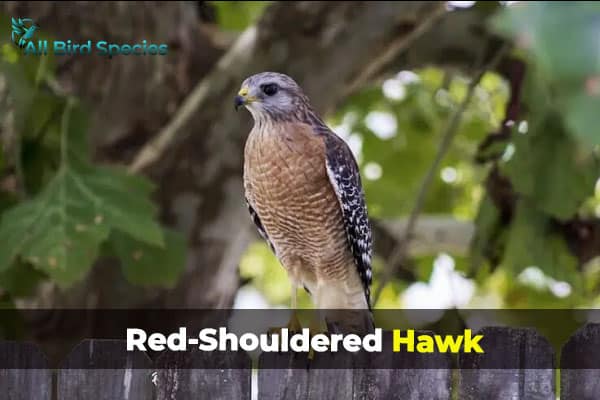
Natural Habitat: Furthermore, the Red-Shouldered Hawks of tennessee loves living in swampy deciduous forests and wooded areas, which makes Tennessee the perfect home for it.
Mating Season: Moreover, April marks the start of its mating season. These hawks prefer quiet wooded areas near water to breed, far from where people live. They’re pretty picky about their nesting spots, often choosing forests with different types of trees.
Family Life: They usually stick with one partner and are very protective of their territory. The male impresses the female by flying in circles and diving close to her. After they decide to nest together, they build a big nest in a tree and might use it again the next year.
Diet: In terms of food, the Red-Shouldered Hawk hunts in the woods, sitting on tall trees or flying low to find prey. They mostly eat small mammals like voles, mice, and moles. But, they also eat crayfish and small birds, especially in winter when there aren’t as many small mammals around.
Conservation: Unfortunately, their numbers went down a lot in the past because people cleared the forests where they lived. But, since the 1950s, efforts to protect these birds have helped their numbers become stable again. The ban on certain harmful pesticides, like DDT, has also helped. So now, the Red-Shouldered Hawk isn’t considered at risk anymore.
2. Northern Harrier
The Northern Harrier is a common hawk in Tennessee, and it’s one of the largest. People often call it the “Gray Ghost” because of its overall gray appearance. Even though it looks a bit like an owl, it’s not closely related to them.
Where They Live: Northern Harriers like to hang out in open places like moorlands, bogs, prairies, and marshes. You might spot them gliding over these areas.

Family Life: During breeding season (which starts in April), the male Northern Harrier does a fancy flight to impress a female. If all goes well, they build their nest on the ground using twigs, grass, and leaves. Sometimes they even nest together in small groups.
What They Eat: These hawks mostly munch on small mammals like voles and ground squirrels. Sometimes they snack on little birds too.
Cool Hunting Moves: When hunting, they circle above the ground, using their sharp senses to find prey. Then, they swoop down and surprise their targets from behind.
Conservation Status: Luckily, Northern Harriers aren’t in big trouble. They’re not facing any major threats except for losing their homes (habitat loss) and sometimes getting poisoned by their prey. Because they live in lots of different places, their population isn’t dropping too fast.
3. Red-Tailed Hawk
The Red-Tailed Hawk is a familiar sight in Tennessee all year long. It’s like the state’s own superstar! Let’s learn more about this impressive bird:

- Appearance:
- The Red-Tailed Hawk has a short, red tail (hence the name) and a brown back. Its underside is pale.
- It’s the largest hawk you’ll find in Tennessee.
- Even though there are 14 different types of Red-Tailed Hawks in North America, they all look pretty similar. But the ones in Tennessee are bigger than most.
- Where They Live:
- These hawks can live in lots of different places, but they really like woodlands and the edges of wooded areas.
- Love Is in the Air:
- Breeding season starts in February. The male Red-Tailed Hawk shows off by flying high and diving near the female.
- Sometimes he even brings her a tasty treat to win her heart!
- Home Sweet Home:
- In Tennessee, they build their nests in tall trees. Sometimes the nest is even taller than the other trees around!
- They’re smart—they often reuse the same nest from the previous year.
- What’s for Dinner?
- Their favorite foods are small mammals like voles, rats, and rabbits. Yum!
- But they’ll snack on smaller birds too.
- Hunting Style:
- When hunting, they use trees for cover. It’s like their secret camouflage.
- Or they glide 20-50 meters above the ground, keeping an eye out for prey.
- Challenges:
- Red-Tailed Hawks have been doing well over the last century. Maybe it’s because some deep forests turned into smaller patches of woods due to logging.
- But they still face threats from illegal shootings by humans and poisoned prey..
4. Cooper’s Hawk
The Cooper’s Hawk, scientifically known as Accipiter cooperii, has a lifespan of about 12 years and measures between 14.6 to 15.3 inches (37-39 cm) in size. Weighing between 7.8 to 14.5 ounces (220-410 g), these birds have a wingspan ranging from 24.4 to 35.4 inches (62-90 cm). Their status is labeled as “Least Concern.”
Moreover, the Cooper’s Hawk, a medium-sized bird, is widely spread across North America, even venturing as far south as Mexico. Its remarkable flying abilities and agility make it stand out, enabling it to capture prey much larger than itself.
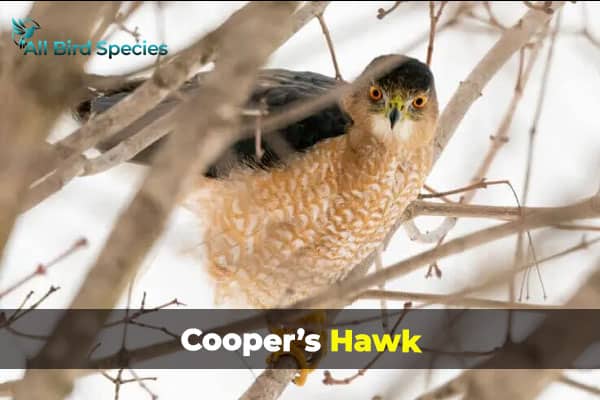
Additionally, adults display distinctive features with pale orange barring on their chests, often leading to confusion with Sharp-shinned Hawks.
Furthermore, these intelligent predators might not always be welcomed by homeowners due to their habit of lurking around birdfeeders to ambush unsuspecting prey. Interestingly, it’s not the birdseed they’re after!
During the breeding season, which typically kicks off around March, male Cooper’s Hawks showcase breathtaking aerial maneuvers in their courtship flights to impress potential mates.
Once a pair is formed, they establish their territory by flying around their nesting area with deliberate, slow wingbeats. Their nests are commonly found in tall trees, often built atop old bird nests or other existing structures.
Cooper’s Hawks of tennessee mainly prey on small birds, either catching them mid-air or by stealthily ambushing them from branches. Additionally, they consume small mammals such as mice and voles, albeit in a less spectacular fashion than their avian prey.
Furthermore, the conservation journey of Cooper’s Hawks has been tumultuous since the 1900s. Initially, their population soared threefold within a short span but plummeted sharply due to hunting.
Once hunting was prohibited, their numbers began to rebound until the use of DDT led to another significant decline. Presently, their population seems stable, with prey poisoning being the primary cause of premature deaths.
5. Sharp-Shinned Hawk
The Sharp-Shinned Hawk, scientifically labeled Accipiter striatus, typically lives up to 5 years and measures between 9.4 to 13.4 inches (24-34 cm) in size. Weighing from 3.1 to 7.7 ounces (87-218 g), they boast a wingspan ranging from 16.9 to 22.1 inches (43-56 cm). Currently, their status is categorized as “Least Concern.”

As the smallest hawk in Tennessee and the entire United States, Sharp-Shinned Hawks exhibit grayish hues on their back and orangy tones on their chests, making them tricky to distinguish from Cooper’s Hawks. However, discerning observers can differentiate them by the stripes on their tail feathers. Despite their diminutive size, they tend to be quite secretive, often hiding in forests during the breeding season.
During mating season, these hawks engage in an elaborate courtship dance, soaring and circling above the forest canopy while vocalizing to attract their mate. The male impresses the female with dazzling aerial displays, diving next to her and showcasing his full body. Nesting is a secretive affair, with nests typically built in the densest coniferous trees within thick forests, strategically close to the trunk to remain concealed.
Adept predators, Sharp-Shinned Hawks primarily prey on small birds and mammals, akin to their larger relative, the Cooper’s Hawk. They employ stealth tactics, hiding in thick foliage or trees, awaiting unsuspecting prey. Their aerial prowess is evident in their ability to capture small birds mid-flight.
Like many avian species, the Sharp-Shinned Hawk suffered heavily from the use of harmful chemicals such as DDT in the 1960s and 1970s. However, since the ban on these chemicals, their population has rebounded and is currently flourishing.
The rising popularity of bird feeders in private gardens has provided Sharp-Shinned Hawks with a readily available food source, aiding in their recovery from past poisoning incidents..
6. Broad-Winged Hawk
The Broad-Winged Hawk is a familiar sight throughout the year in Tennessee, especially in the northern regions where it breeds. Birdwatchers eagerly anticipate the migration of these hawks, considering it one of nature’s grand spectacles.
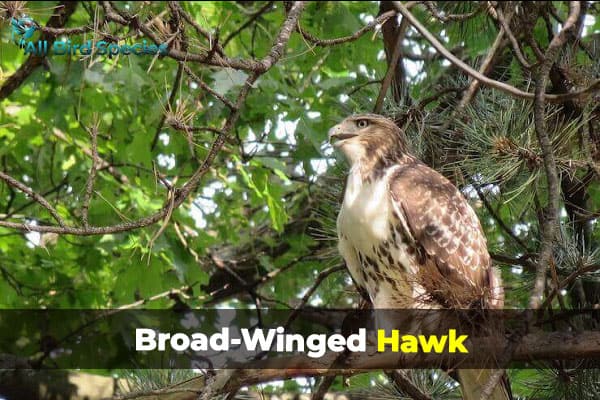
Come autumn, droves of Broad-Winged Hawks of tennessee assemble in vast flocks, gearing up for their journey to South America. Their dark brown bodies adorned with pale whitish bellies, adorned with horizontal bars, make for a striking sight.
7. Northern Goshawk
The Northern Goshawk, scientifically named Accipiter gentilis, typically lives up to 6 years and measures between 20 to 25.2 inches in size. Weighing from 22.3 to 48.1 ounces (265-560 g), they boast a wingspan ranging from 40.5 to 46.1 inches. Currently, their status is categorized as “Least Concern.”
This majestic bird shares the remarkable agility characteristic of its hawk counterparts, the Cooper’s Hawk and Sharp-Shinned Hawk, enabling it to effortlessly navigate dense forests.

Renowned for its elusive nature, the Northern Goshawk often evades detection beneath the thick canopy of the forest. While its breeding range typically extends further north, a small non-breeding population exists in the northern regions of Tennessee, representing the species’ southernmost boundary.
Distinguished by its dark grey upper body and lighter, black-striped underparts, this bird presents a captivating sight.
During the mating season, the Northern Goshawk exhibits monogamous behavior akin to the Sharp-Shinned Hawks of tennessee. The male and female engage in a courtship ritual involving circling above forests, with the male executing impressive dives and offering food to woo the female. Nest construction is predominantly the female’s responsibility, while the male contributes by providing sustenance.
Their nests are commonly nestled high in tall trees within dense forests.
8. Rough-Legged Hawk
The Rough-Legged Hawk stands out as a distinctive species, confined to breeding solely in the high Arctic and making its seasonal appearance in Tennessee during winter.
Adorned in brown plumage, complemented by a lighter head and adorned with dark spots throughout its body, the Rough-Legged Hawk is easily recognizable. What truly sets it apart is the prominent dark spot on its underside, setting it apart from its hawk counterparts. Notably, its feathered legs extending down to its toes are a specialized adaptation for life in the harsh Arctic, hence the name “Rough-Legged.”
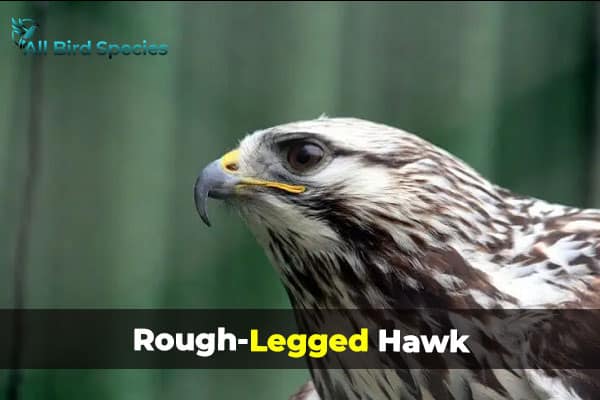
As autumn arrives, Rough-Legged Hawks embark on the quest for nesting sites in regions abundant with prey, preparing for the upcoming breeding season commencing in May.
During this breeding season, both males and females partake in aerial courtship displays, with the male executing an elegant sky dance. Nest construction takes place on cliff sides, utilizing a mixture of sticks, bones, and assorted materials.
While the Rough-Legged Hawk currently faces no significant threats, potential risks loom in the form of indirect poisoning of prey during their wintering grounds and habitat loss induced by climate change. Although information regarding their population status is limited, indications suggest stability.
Check Our Previous Articles
Where to find Hawks of Tennessee
Hawk watching in Tennessee can be a rewarding experience, and with the right approach, you can safely enjoy observing these magnificent birds. Here are some tips to enhance your hawk-spotting adventure:
1. Best Times to Watch: Hawks are diurnal, meaning they’re most active during the day. The best times to spot them are in the early morning or late afternoon when they’re hunting.
2. Ideal Locations: Visiting state parks and wildlife refuges can greatly increase your chances of seeing hawks. These places often have trails specifically designed for wildlife viewing.
3. Safety Precautions:
- Be Observant: Hawks often fly low while hunting, so watch for them in open fields or forest edges.
- Don’t Feed Them: Feeding hawks can make them too comfortable around humans, which isn’t safe for either party.
- Respect Their Space: Stay clear of areas where hawks are nesting, as they can be very protective.
4. Where to Go:
Some popular hawk-watching spots in Tennessee include:
- Great Smoky Mountains National Park: A biodiversity hotspot with plenty of trails.
- Chickamauga and Chattanooga National Military Park: Offers a mix of history and nature.
- Radnor Lake State Park: A peaceful setting ideal for spotting various hawk species.
- Reelfoot Lake State Park: Known for its unique landscape and birdwatching opportunities.
- Hiwassee Wildlife Refuge: A haven for migratory birds, including hawks.
Remember, patience is key when it comes to wildlife observation. Take your time, enjoy the surroundings, and keep your binoculars handy for when a hawk comes into view. Happy birdwatching!


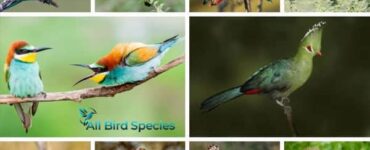


Add comment